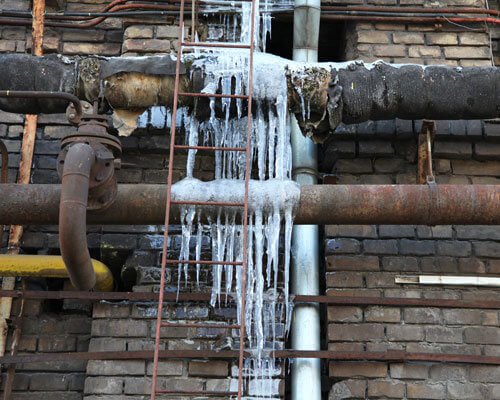Essential Tips to Avoid Frozen Plumbing in Winter
Essential Tips to Avoid Frozen Plumbing in Winter
Blog Article
This article following next in relation to How To Avoid Freezing Pipes is truly stimulating. You should check it out.

Cold weather can ruin your pipes, particularly by freezing pipelines. Right here's exactly how to prevent it from occurring and what to do if it does.
Intro
As temperature levels decrease, the risk of frozen pipelines boosts, potentially causing expensive repair work and water damage. Comprehending exactly how to avoid icy pipes is important for homeowners in chilly environments.
Understanding Frozen Pipelines
What creates pipes to freeze?
Pipelines ice up when revealed to temperatures below 32 ° F (0 ° C) for extended periods. As water inside the pipes freezes, it broadens, taxing the pipeline wall surfaces and possibly triggering them to break.
Dangers and damages
Frozen pipes can cause water system interruptions, home damage, and pricey repairs. Ruptured pipelines can flooding homes and trigger extensive architectural damages.
Signs of Frozen Piping
Identifying icy pipelines early can prevent them from rupturing.
Just how to identify frozen pipelines
Look for reduced water circulation from taps, uncommon odors or noises from pipes, and noticeable frost on subjected pipelines.
Prevention Tips
Insulating susceptible pipes
Wrap pipes in insulation sleeves or make use of warm tape to safeguard them from freezing temperatures. Concentrate on pipes in unheated or external locations of the home.
Home heating strategies
Keep interior spaces effectively warmed, particularly areas with plumbing. Open up cabinet doors to permit cozy air to distribute around pipelines under sinks.
Shielding Outside Plumbing
Garden tubes and exterior taps
Disconnect and drain pipes garden tubes prior to winter season. Mount frost-proof spigots or cover exterior faucets with protected caps.
What to Do If Your Pipes Freeze
Immediate activities to take
If you believe frozen pipelines, keep faucets available to ease stress as the ice thaws. Use a hairdryer or towels taken in warm water to thaw pipelines slowly.
Long-Term Solutions
Structural modifications
Think about rerouting pipelines away from exterior walls or unheated areas. Include extra insulation to attic rooms, cellars, and crawl spaces.
Updating insulation
Buy high-quality insulation for pipelines, attic rooms, and walls. Proper insulation aids keep constant temperatures and reduces the danger of frozen pipelines.
Conclusion
Preventing frozen pipelines requires aggressive actions and fast reactions. By recognizing the causes, signs, and preventive measures, property owners can safeguard their plumbing during winter.
5 Ways to Prevent Frozen Pipes
Drain Outdoor Faucets and Disconnect Hoses
First, close the shut-off valve that controls the flow of water in the pipe to your outdoor faucet. Then, head outside to disconnect and drain your hose and open the outdoor faucet to allow the water to completely drain out of the line. Turn off the faucet when done. Finally, head back to the shut-off valve and drain the remaining water inside the pipe into a bucket or container. Additionally, if you have a home irrigation system, you should consider hiring an expert to clear the system of water each year.
Insulate Pipes
One of the best and most cost-effective methods for preventing frozen water pipes is to wrap your pipes with insulation. This is especially important for areas in your home that aren’t exposed to heat, such as an attic. We suggest using foam sleeves, which can typically be found at your local hardware store.
Keep Heat Running at 65
Your pipes are located inside your walls, and the temperature there is much colder than the rest of the house. To prevent your pipes from freezing, The Insurance Information Institute suggests that you keep your home heated to at least 65 degrees, even when traveling. You may want to invest in smart devices that can keep an eye on the temperature in your home while you’re away.
Leave Water Dripping
Moving water — even a small trickle — can prevent ice from forming inside your pipes. When freezing temps are imminent, start a drip of water from all faucets that serve exposed pipes. Leaving a few faucets running will also help relieve pressure inside the pipes and help prevent a rupture if the water inside freezes.
Open Cupboard Doors
Warm your kitchen and bathroom pipes by opening cupboards and vanities. You should also leave your interior doors ajar to help warm air circulate evenly throughout your home.

Do you enjoy reading up on How To Avoid Freezing Pipes? Create a remark down below. We'd be delighted to listen to your reactions about this page. In hopes to see you back again in the near future. Sharing is caring. One never knows, you could be doing someone a favor. We love your readership.
Check It Out Report this page